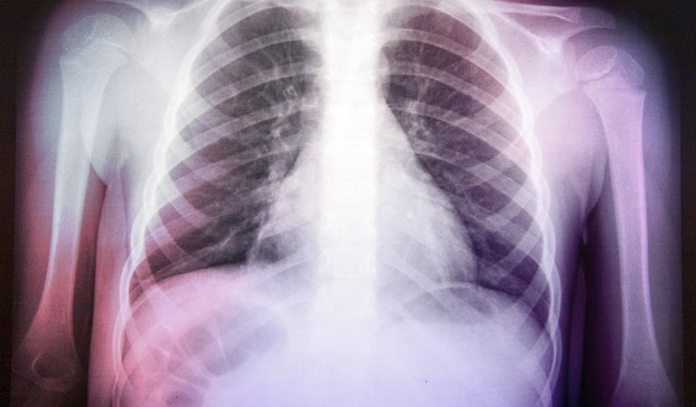Breathlessness is medically known as dyspnea. It is characterized by shortness of breaths. Breathlessness is a common symptom associated with many pulmonary conditions. This condition can have a debilitating effect on people. It can be either chronic or acute, depending on the medical condition of an individual. Various people define their symptoms in different ways. Sense of suffocation, collapsing of the chest, a heavy object sitting on the chest etc. are just a few examples of those descriptions. It is important to differentiate the normal feeling of breathlessness from the breathlessness associated with a chronic condition. Breathlessness due to strenuous physical activity, lack of stamina, and high altitude is a normal and acceptable reaction of the body. But, there are many other medical conditions that can cause breathlessness that we should be aware of.
1. Pneumonia

This disease occurs due to the infection of the lungs. This infection can be caused by various agents like viruses, bacteria or even fungi. It is generally treatable and not life threatening for everyone above the age of 2 and below the age of 65. But, it can be pose a serious threat to individuals with compromised immunity and preexisting health conditions. The diagnostic method is generally a chest X-ray. Also, poor health choices like smoking can aggravate the chances of this disease.
Symptoms for this disease can include fever, cough, breathlessness, nausea, chest pain, fatigue, diarrhea and vomiting. Pneumonia can be of two types; lobar pneumonia and bronchopneumonia. Lobar pneumonia affects only one part of a lung, whereas bronchopneumonia can spread throughout the lungs. Medication and care can cure this disease.
2. Asthma

Asthma is another debilitating respiratory condition that is associated with the symptom of breathlessness. This condition can be characterized by narrowing of the respiratory airways due to inflammation. The muscles present in the airways start to tighten up and narrow down the airways (bronchoconstriction). This leads to the reduction of air supply to the lungs. The severity of asthma can vary from intermittent to severe persistent. The individuals with varying degree of asthma also experience attacks of varying intensities.
Wheezing, breathlessness, cough are the symptoms of asthma. Doctors can diagnose this disease through various lung tests and comparative study of the medications. There is no present cure for asthma, but it can be managed with medication. Swimming is a good way of strengthening our lungs which can help in combating asthma.
3. Anemia

Anemia is clinically defined as a deficiency of required amount of red blood cells in the blood. Red blood cells are the key players in the transport of oxygen throughout our bodies. Red blood cells transport oxygen to the tissues and the cells. Our cells utilize this oxygen to produce energy. But, when there is a deficiency of red blood cells, our bodies become weak due to the lack of energy production. Anemia can surface from various underlying reasons like increased destruction or diminished production of red blood cells.
Symptoms for this disease include fatigue, weakness, breathlessness, pale skin and dizziness. Anemia can be diagnosed easily through blood tests like a hemoglobin test. Prolonged bleeding, iron deficiency, malnutrition can also be a few causes of anemia. Thankfully, it can be treated easily with care and medication. But, this condition can be fatal if left untreated for long.
4. Congestive Heart Failure

Congestive heart failure is the failure of the heart to pump enough blood for carrying out normal body functions. This condition can be either short-lived or drag out over a longer duration. Long-lived congestive heart failure can lead to death. The main cause behind this disease is narrowed arterial passages. Other secondary causes can be high blood pressure, heart attacks, diabetes, arrhythmia and lung diseases.
Symptoms for this disease are breathlessness, chest pain, cough, fatigue, weight gain, swelling of toes or feet and increased heartbeat. This condition can be diagnosed using tests like echocardiogram. It can be managed with the right medication, healthy lifestyle choices, and surgery if required.
So, pay a little more attention to your body to know it better. And, if you see any of these symptoms, visit a doctor today.





